The Basement in the Attic
Joris Brouwers, Isaac Carlos, Koenraad Dedobbeleer, Kaleb de Groot, Michiel Kluiters, Gabriel Lester, Hermann Maier Neustadt, Ingrid Mostrey, Ebru Oszeyen, Jan Verheyden, Freek WambacqThe original plan for this exhibition revolved around a rigorous act of literal constructivism; an enormous labyrinth - interior architecture Escher-style; as a way of camouflaging and blanking out the familiar lines of the space to create a sort of course.
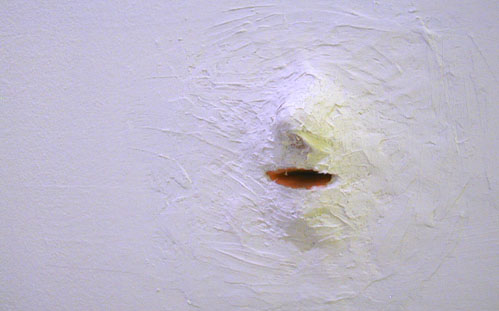
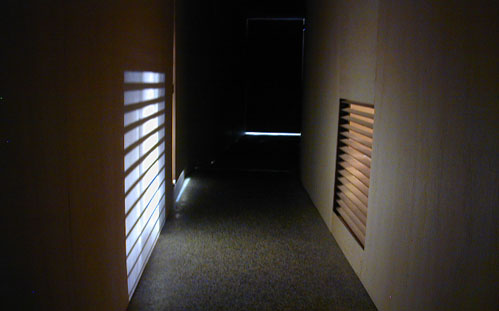



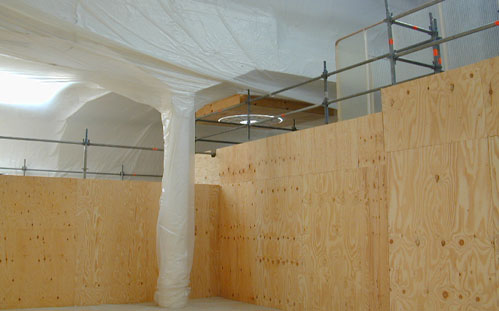
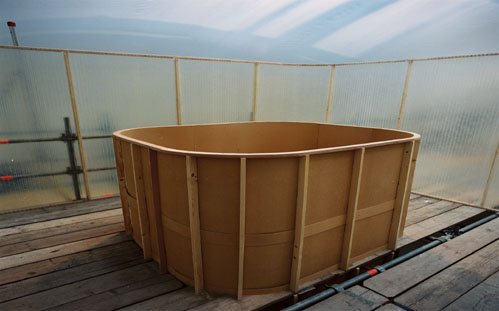


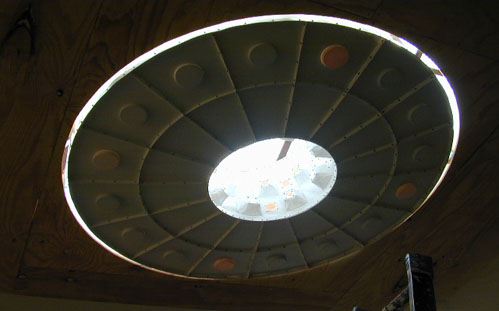

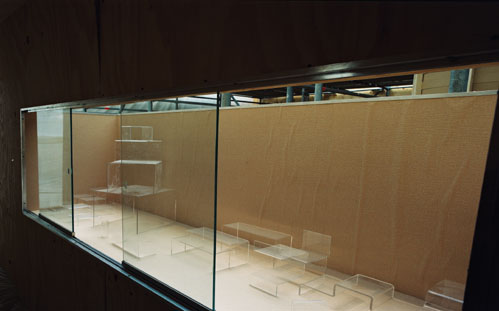

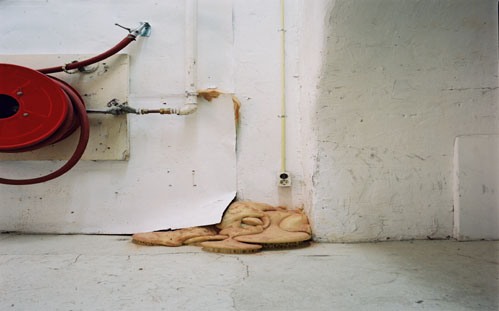

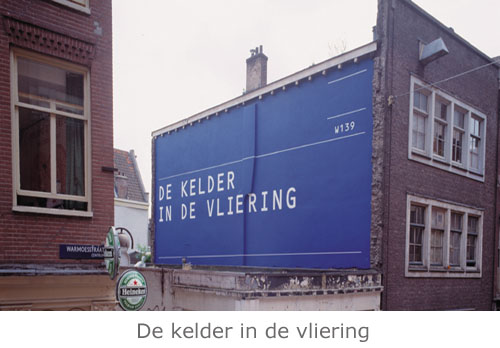
The artists were asked to come up with a 3D design for a full-on experience. Objects and installations had to give way to a closed module where light, size, material - and the meaning of all three - are the most important elements. These modules, whatever their shape or size, were then joined up to tempt the viewer to step into a brief, 3D experience.
Over the last few months, the artists met five times to talk about the individual spaces, ways of connecting them that made sense, and what this kind of work means where the fundaments are eurhythmics, a construction skeleton, bricolage, ephemeral experience, and physical assembly. Over the decades, there has been a proliferation of artist-designed macro structures in which the public physically participates. This was the idea behind selecting the participating artists. All have successfully made their mark in this genre in earlier installations.
DE KELDER IN DE VLIERING is an accumulation of the personality of W139; the space has evolved into a production house for huge physical installations. All our resources and expertise were invested in these projects. A special edition of the Dutch language arts journal, HTV de Ijsberg, designed as always by the Designpolitie and Juul Hondius, will mark the show. The artists supplied a one-liner reflecting the invitations created last year by the Designpolitie for W139, that appeared throughout Amsterdam. * HTV will also focus on the sources of the work.
DE KELDER IN DE VLIERING starts with a series of corridors; Isaac Carlos kicks off the assault on our senses. Carlos staged a play with a cast of latex actors muttering inaudible lines. It's up to us to fill in the words. Their monologues are visual cacophonies of unspoken text. Next, Michiel Kluiters takes to the boards, hauling viewers into industrial air conditioning systems - a space that's normally hovering in the wings in the inaccessible spaces of interiors. A grid, a glimpse of endless actual air. This is followed by a print extolling the same merits, eyeline and fractured imaged. To see Kluiters work in full, the viewer must complete the course. Next in line is the work of Gabriel Lester; a piece that is completed by viewers walking around it. Following the lead of earlier works, his is a theatrical intervention where the viewer finishes off the physical montage by peeping through spy-holes. As always, Lester plays with the viewer; can we tell what we are looking at?
The corridor suddenly peters out and we're confronted with the most radical gesture. A gigantic plastic sack made to size, fills the whole of the rear space. The sack is kept up by constant air pressure from electrical air pumps, creating static energy so that the plastic sticks to the walls. By Koenraad Dedobbeleer and architect Jan Verheyden, who actually developed the process, the piece encompasses the entire show. In the words of poet Paul Snoek, they have the soft hands of an inventor because they have created a castle in the air. The sack surrounds us too as we decide where to go next. Into the high cellar of Joris Brouwers? A ladder beckons but the space has been erased. Brouwers drew and wrote on a plasterboard module, before erasing the lot with bucketloads of Tippex. He not only deleted what he had added but did the entire room. A subtle concept of existence and absence.
Or should we chance the observatoria of Hermann Maier Neustadt two circular look-outs made from transparent Plexiglas panels offer a coloured view of the whole of the rear space. Maier Neustadt's work presents a clouded view, we can choose between bright and dark - of the exhibition, challenging our senses. Like the work by Kluiters, his work is only complete once we've seen the show as a whole.
Now we descend into the work of Freek Wambacq, a route along vitrines, walls, stairways and lintels where sculptures seem to be stored rather than presented. Wambacq's work treads the line between residue and sublime image. They bear the traces of what is a banal but at the same time distinctly styled mystery. Now there is another upward staircase scores of crickets nestled about an attic window. Thanks to Ingrid Mostrey's gauze habitat, we&Mac226;re eyeball to eyeball with insects. Mostrey's intervention makes you feel you're watching from inside a submarine.
Two other works are key to the exhibition. Ebru Öszeyen's proposal was not financially feasible but is presented in the form of documentation and echoes the concept of the show, not only in spirit. The details of her project are published in HTV.
The final work is that of Kaleb de Groot. His very subtle interventions pop up here and there. De Groot mounted tiny amounts of powdered anabolic steroids between the seams of the corridor panels. The substance is so aggressive that it wreaks havoc with the construction material, causing searing tears. Like the cellar in the attic, this is the place for de Groot's reverse thinking. Like the other works, this is a spatial experience in the purest sense. (Jean Bernard Koeman).
*Frederik Hendrikstraat 214